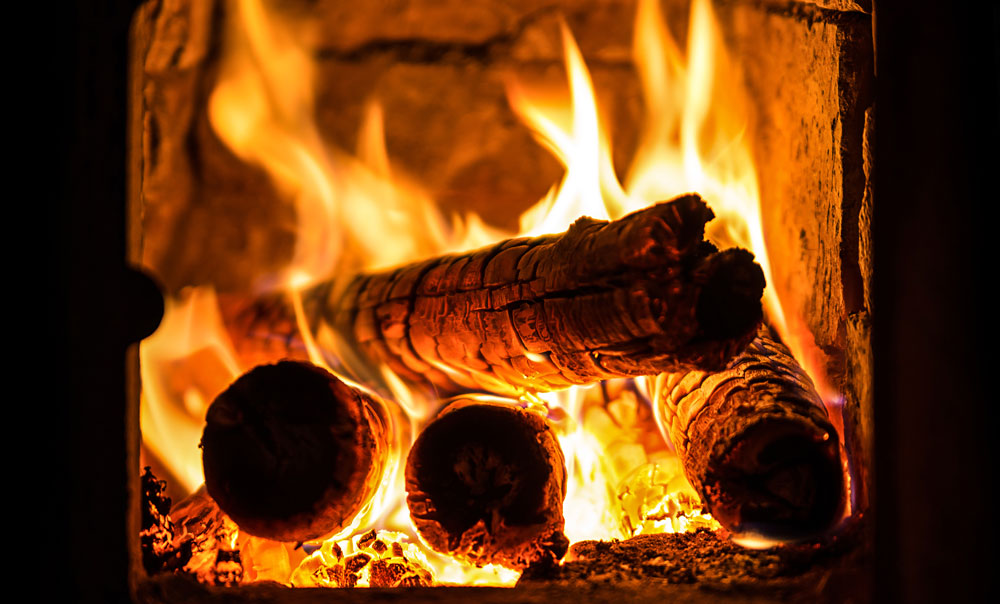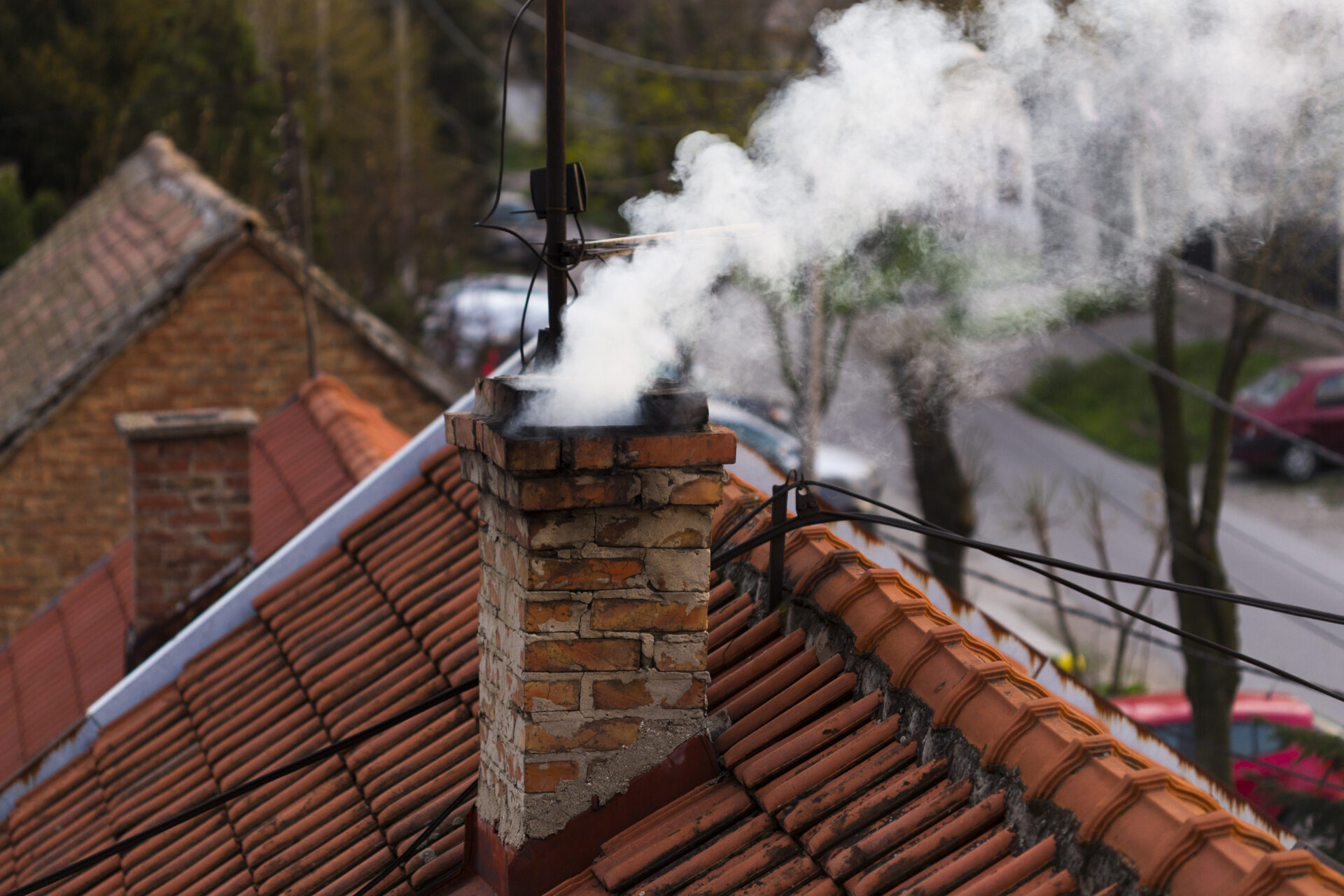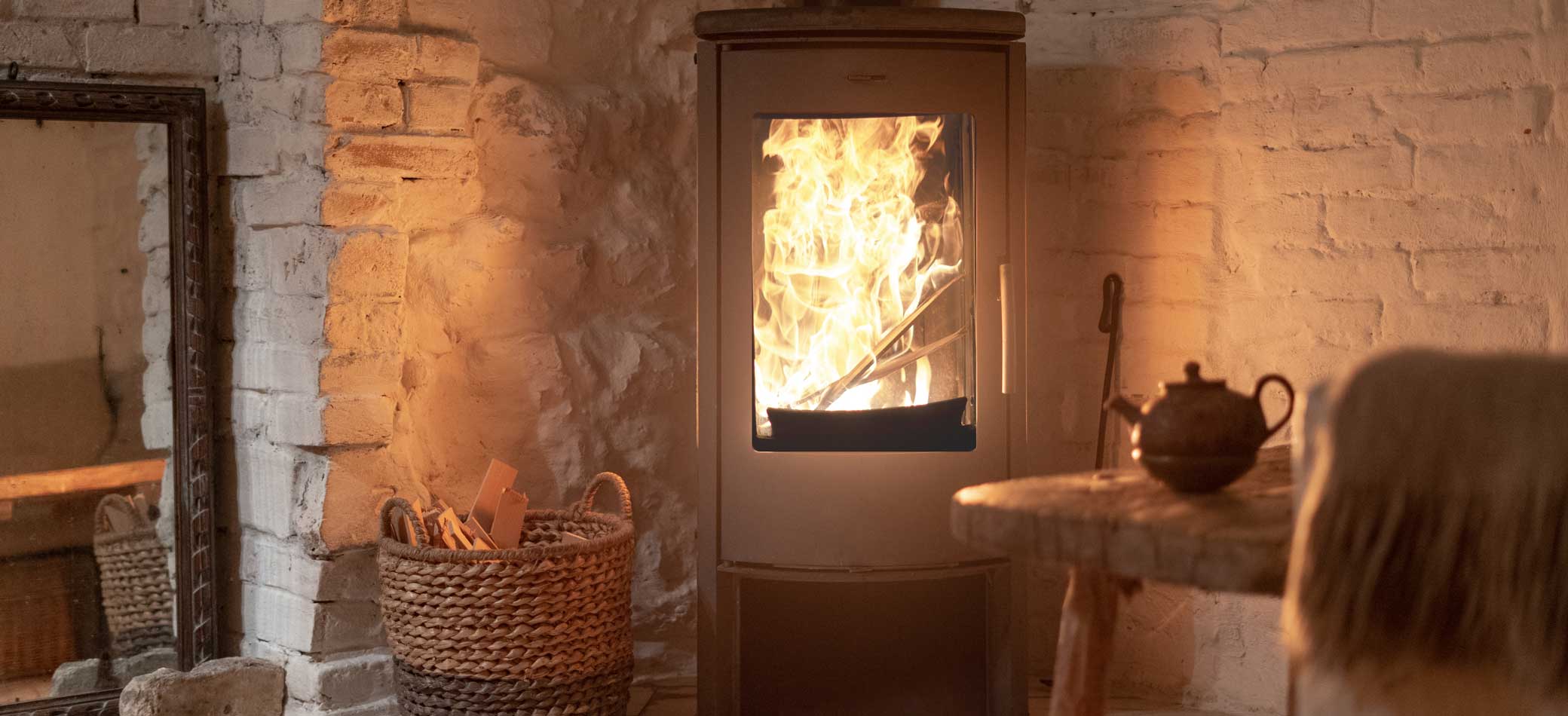Emissions from wood burning have been greatly reduced in recent decades, thanks to continuous research and technology development in the field. This is demonstrated by results from the knowledge-building project for industry SusWoodStoves.
Over the last two years, we have conducted extensive experimental campaigns to document the emissions of various components of wood-burning stoves that are harmful to the environment, climate, and health. We have tested cast iron stoves, sheet steel stoves, and soapstone stoves, which are representative of today’s modern fireplaces. We can clearly see that the continuous research and development activity that has taken place over the last decades has resulted in technology that significantly reduces many harmful emissions.
Emission accounts must be updated
The results are good news that must also be reflected in our national emission inventory. Updated emission factors (per kg dry wood) must be used when calculating the total emissions from Norway’s wood-burning stoves, based on the type of technology (old wood-burning stove – before 1998; modern wood-burning stove – from 1998; and open fireplace) and wood consumption. These emission factors were last updated in a study by FME CenBio, published in 2017, and were supposed to represent all modern wood-burning stoves installed since 1998.
In SusWoodStoves, we compared the emission factors currently used for modern wood-burning stoves in the Norwegian national emission inventory with three modern wood-burning stoves.
We found that the three modern wood-burning stoves had on average:
- 52% lower emissions for the smallest (and most dangerous) particles (PM2.5)
- 72% lower emissions for carbon monoxide (CO)
- 76% lower emissions for methane (CH4)
- 77% lower emissions for other relatively light gases (NMVOC)
- 70% lower emissions for the heaviest gas components that condense as liquid particles in the atmosphere
Increasingly, old wood-burning stoves with high emissions are being replaced with modern wood-burning stoves, which contribute significantly to reducing emissions. In addition, modern wood-burning stoves are continuously improved. The technologies are also becoming more robust and user friendly, and it is increasingly possible to automate air supply and distribution. This will further reduce the user’s impact on the combustion process. The coziness and comfort of wood burning can thus be maintained in a significantly more sustainable way today than before. This is very important today, where the results of human impact on the Earth’s climate are becoming more and more apparent, and every effort must be put into reducing, stopping, and ideally reversing this development.

Fully utilise the biomass
It is important to use the biomass in the most energy-efficient and resource-efficient way possible; that is, to fully utilise the energy contained in each individual log. It is a common belief that the use of biomass for energy purposes is CO2-neutral and does not contribute to global warming. This is correct if we only look at the CO2 emissions and assume that the amount of biomass used for energy purposes does not change. Then, the contribution to the greenhouse effect from this use of biomass will not change.
However, this is a simplification, as the use of biomass for energy and other purposes will contribute directly or indirectly to global warming through other greenhouse gas emissions across the associated value chain, from the resource base (e.g., the forest) to the end use (e.g., residential heating). Biomass is a very valuable resource, and biogenic carbon (biomass carbon recycled via the uptake of CO2 from the atmosphere) is our only real carbon source to limit the use of fossil carbon, where CO2 emissions from the use of fossil carbon directly contribute to global warming. In the SusWoodStoves project, we have documented that modern wood-burning stoves also contribute to utilising the logs in an increasingly more energy-efficient manner.
Energy efficiency is around 80% for these modern wood-burning stoves, and slightly higher for a heat-storage stove (e.g., soapstone stove), which utilises the heat in the flue gas to a greater extent by storing it in the stove materials. The reason the energy efficiency is not even higher is due to lower efficiency when lighting the fire and when only charcoal remains. In the relatively stable combustion period between these periods, SusWoodStoves has documented that the efficiency is around 90%. This is the same as for a pellet stove, which is fired continuously and controlled with small wood pellets.
Firing at nominal load produces lowest emissions
The emission factors we have found in the SusWoodStoves project (see the list further up) are weighted factors that include both firing at nominal load (firing with the right amount of wood and sufficient air in relation to the stove’s size) and partial load (throttling of air supply to reduce wood turnover, or reduced amount of wood). Emissions are several times higher at partial load than at nominal load. The biggest difference between emissions at partial load and nominal load is for CH4, where the emissions are 4.6 times higher at partial load. This is because at partial load, the combustion conditions are poorer, and the temperature in the wood-burning stove is significantly lower than at nominal load. This leads to CH4 from the logs not burning out since this is a stable molecule that needs a high temperature to burn out quickly enough in a wood-burning stove.

Soot and black carbon
For black carbon, which is mainly found in soot, the story is different. Soot is particles formed from light hydrocarbons, and the yellow colour of flames is due to radiation from the combustion of this soot. If the flame volume becomes large and fills the entire combustion chamber, the flames will hit the walls and be extinguished. This is why soot emissions are still significant in modern wood-burning stoves. However, soot emissions in old wood-burning stoves are higher and due to the same reasons as for the other unburned components, i.e., the combustion conditions are too poor due to not having the stepwise air supply found in all modern wood-burning stoves.
Nitrogen and sulphur
When it comes to emissions of components formed from nitrogen and sulfur in the logs, these are much harder to reduce than emissions of unburned components. Nitrogen oxides (NOx) can be reduced somewhat by implementing a reduction zone after the addition of primary air, where NO is then partially reduced to molecular nitrogen. Secondary air is then added for final combustion. However, this principle cannot be effectively implemented in modern wood-burning stoves, which operate with only one combustion chamber. Therefore, NOx emissions are as high for modern wood-burning stoves as for old wood-burning stoves.
Emissions of the strong greenhouse gas nitrous oxide (N2O) are very low from wood burning, and the results from SusWoodStoves show that the emission factor for modern wood-burning stoves is lower than is given in the Norwegian national emission inventory. Nitrous oxide emissions are also higher at partial load than at nominal load. Sulphur dioxide (SO2) emissions are a natural result of a good combustion process for a sulphur-containing fuel, and the emissions can in practice only be reduced by cleaning the flue gas. Fortunately, the sulphur content in logs is very low.
The nitrogen content in logs depends on the type of tree. Hardwood species (deciduous trees) like birch contain significantly more nitrogen than softwood species (conifers) like spruce and pine, resulting in significantly higher NOx emissions from birch. The simple solution to reduce NOx emissions is to burn more spruce and pine and less birch and other hardwood species.
Hardwood and softwood tree species
Many believe that birch burns much better than other, softer wood species. The hardwood species have significantly higher density and a slightly different chemical composition than the softwood species, and this will affect the course of the combustion process somewhat. But this does not mean that the emissions will be higher for that reason; it is still combustion parameters such as temperature, residence time, and oxygen availability that control the combustion process, and therefore the emissions.
The same level of emissions of unburned components from birch, spruce, and pine have been documented in SusWoodStoves, with one exception: a relatively high proportion of soot is formed from pine. This is because pine contains significantly more extractives (resin), which gases off at a relatively low temperature. This results in higher soot emissions when combustion conditions are not sufficient to completely burn out all soot particles. You will have the lowest emissions and highest energy efficiency when you operate the stove at nominal load and fire continuously. It is therefore important to have a wood-burning stove that matches the heating needs of the house.
Further research: sustainability assessment of the entire value chain
The significant improvements in reduced emissions and increased energy efficiency clearly demonstrate that research and development are effective. At the same time, we need to focus on continuing the good work and on reducing some emission components that have so far been challenging to reduce. This applies especially to black carbon, mainly in the form of soot.
Although wood burning itself contributes significantly to the sustainability assessment of the entire wood burning value chain, other elements in this value chain related to resources, extraction, processing and transport, also factor in. Exactly how much they contribute is a complicated calculation, and therefore a PhD candidate in SusWoodStoves has started to look more closely at this.
Further research: the role of the wood-burning stove in the energy system
To optimally utilise the heat produced from wood burning, it is also important to optimally integrate the wood-burning stove into the home’s energy supply system. The second PhD candidate in SusWoodStoves is looking at this, as well as the connection between the use of wood burning and electricity in homes.
The use of wood for heating contributes significantly to reducing the use of electricity for heating in homes in Norway, especially on cold days when electricity consumption and electricity prices are at their highest. This means that our renewable electricity can be used to a greater extent for other purposes as a replacement for fossil resources. The transmission capacity in the electricity grid also does not need to be as high when wood burning accounts for a significant part of home heating, which is economically beneficial for society.
At this time, there is little doubt about the importance of wood burning in the Norwegian energy system regarding home heating and energy security. At the same time, there is no reason to rest on our laurels; we must continue the work to reduce the environmental, climate, and health impacts from wood burning.

Your contribution to a better environment, climate and health
You can make a significant contribution to reducing the environmental, climate, and health impact from wood burning by burning correctly and regularly maintaining the wood-burning stove. If you have an old wood-burning stove, which has outdated combustion technology, then replace it with a modern wood-burning stove. It is not enough to be a self-proclaimed expert on wood burning: when you fire in an old wood-burning stove, the emissions will still be significant.
Many have been surprised when they have looked into the stove pipe and seen significant amounts of soot particles coating the walls. This coating represents poor combustion, high emissions and low energy efficiency. An investment of a couple of hundred Norwegian kroner (about 20 Euro) in your own sweeping equipment for stove pipes can be a very favourable economic investment, due to increased energy efficiency (more heat to the room), better draft (less pressure loss), and therefore a stronger chimney motor and better combustion conditions. This coating and similar coatings that will settle at the bottom of the chimney also represent a significant fire hazard, and results in many chimney fires every year.
In SusWoodStoves, work continues to contribute to more sustainable wood burning in the future. If you want to know more about the project or wood burning, visit the project’s website.
References
- Emission levels and emission factors for modern wood stoves
- Energy Efficiency Increase by Improved Operation and Control in Wood Stoves
- Reducing Emissions from Current Clean-Burn Wood Stove Technology by Automating the Combustion Air Supply and Improving the End-User Interaction – Two Important Primary Measures









Comments
No comments yet. Be the first to comment!